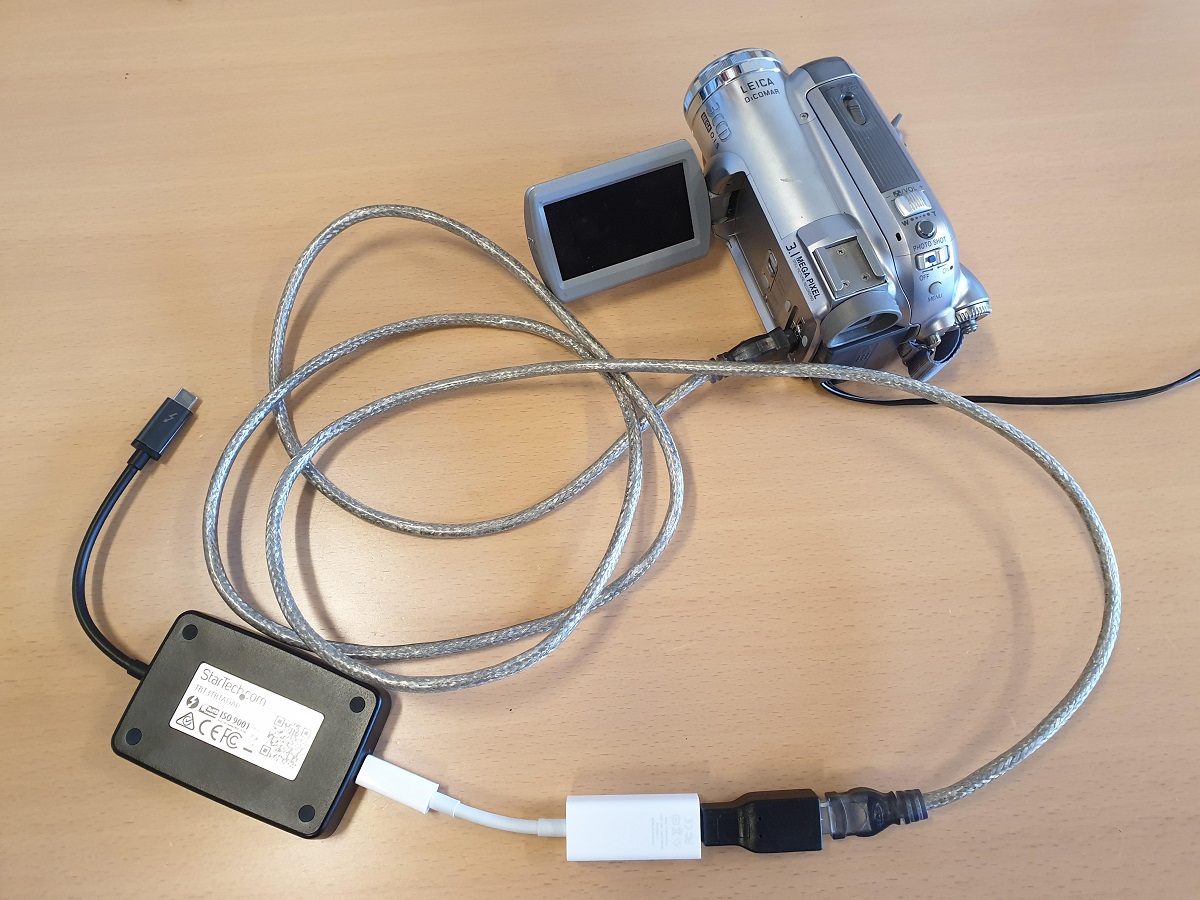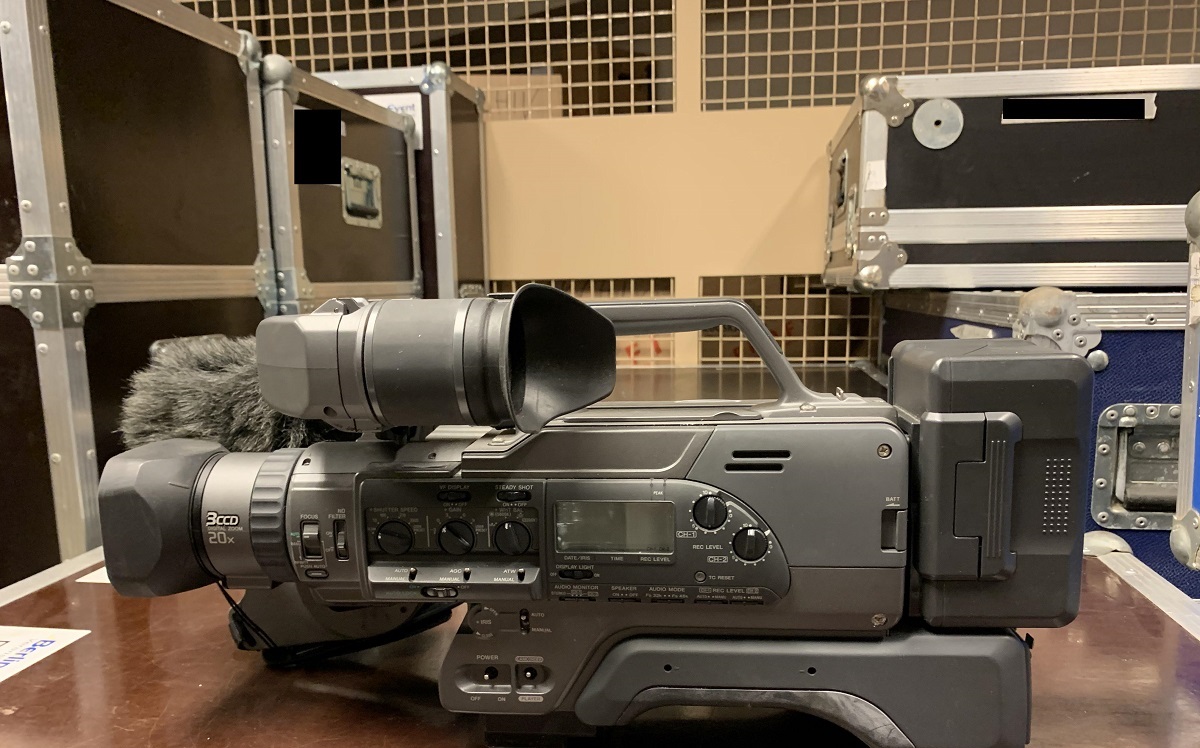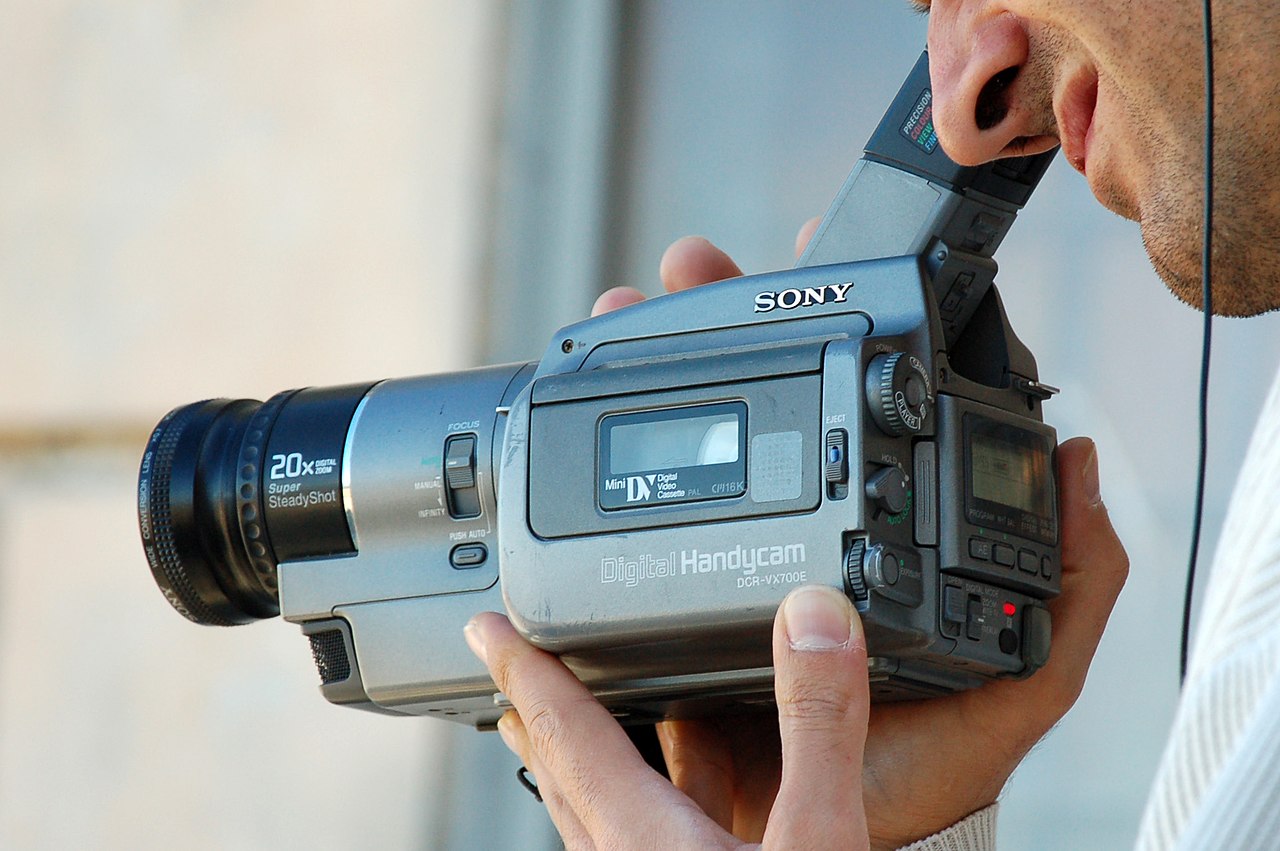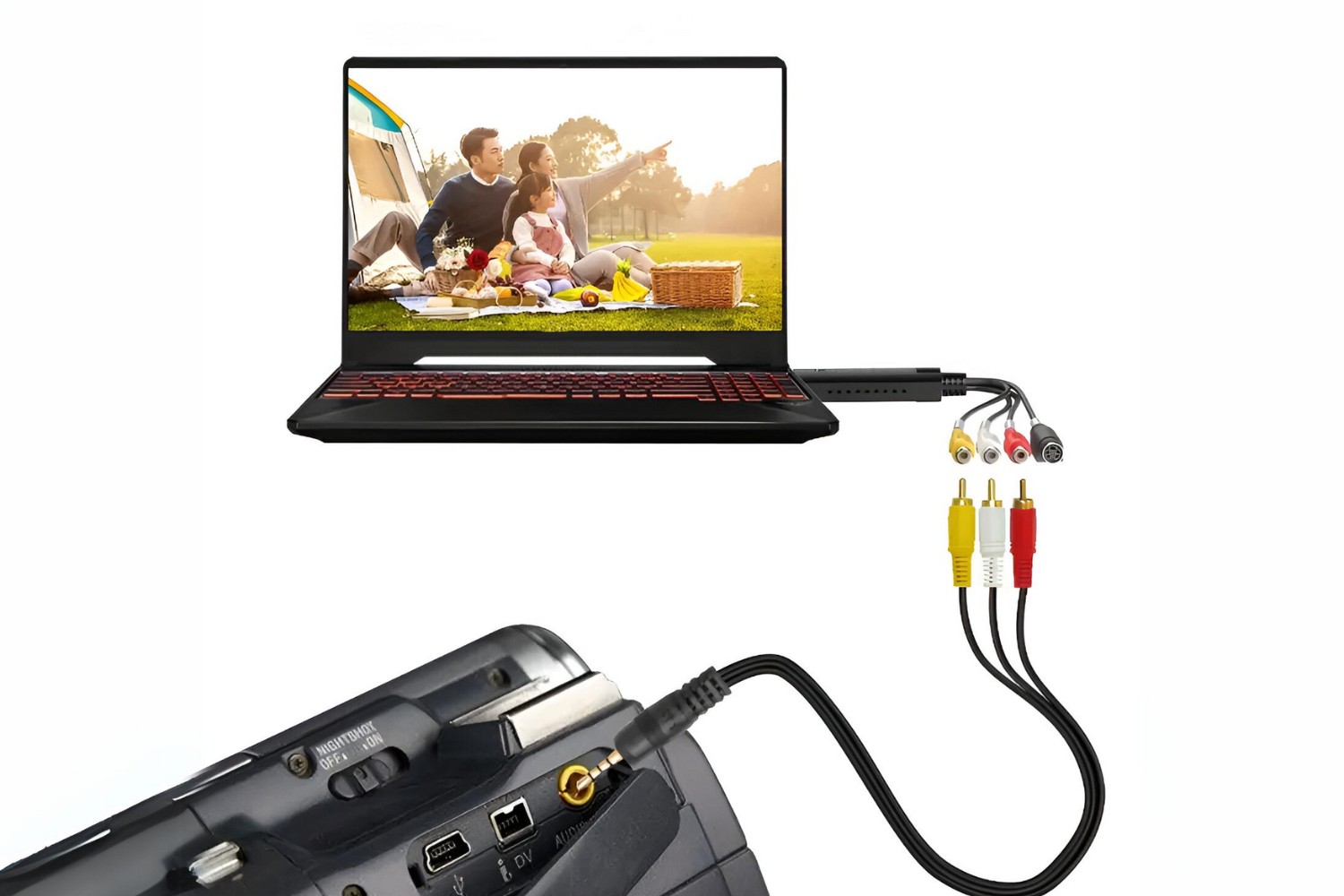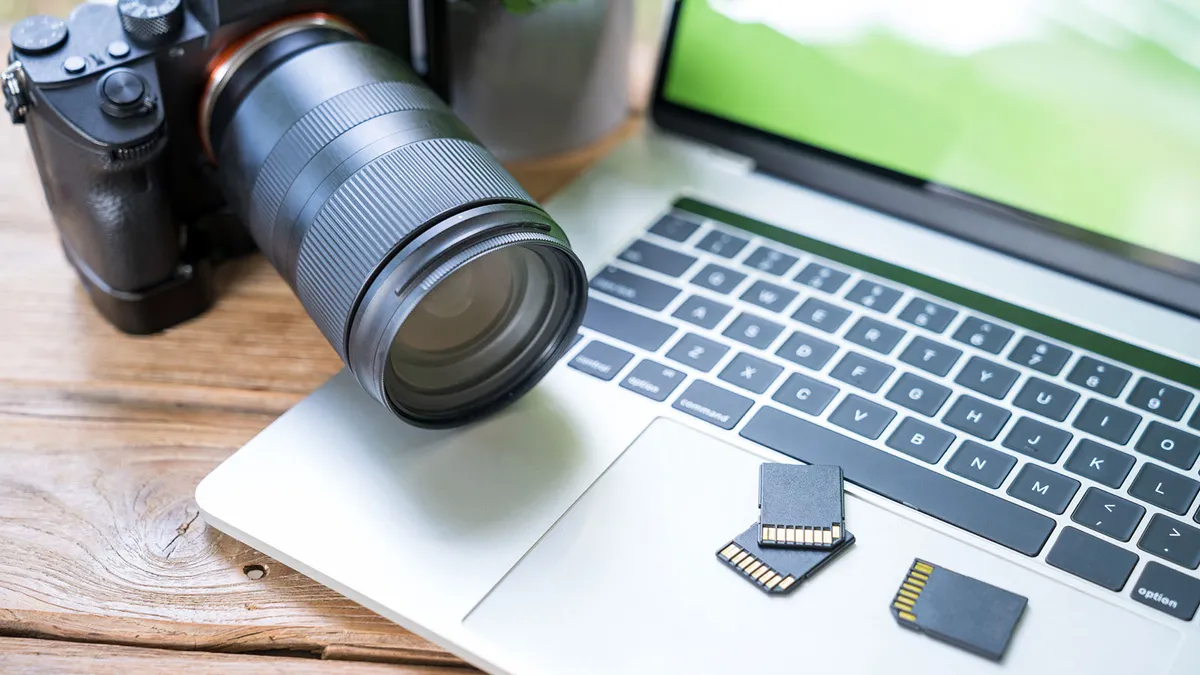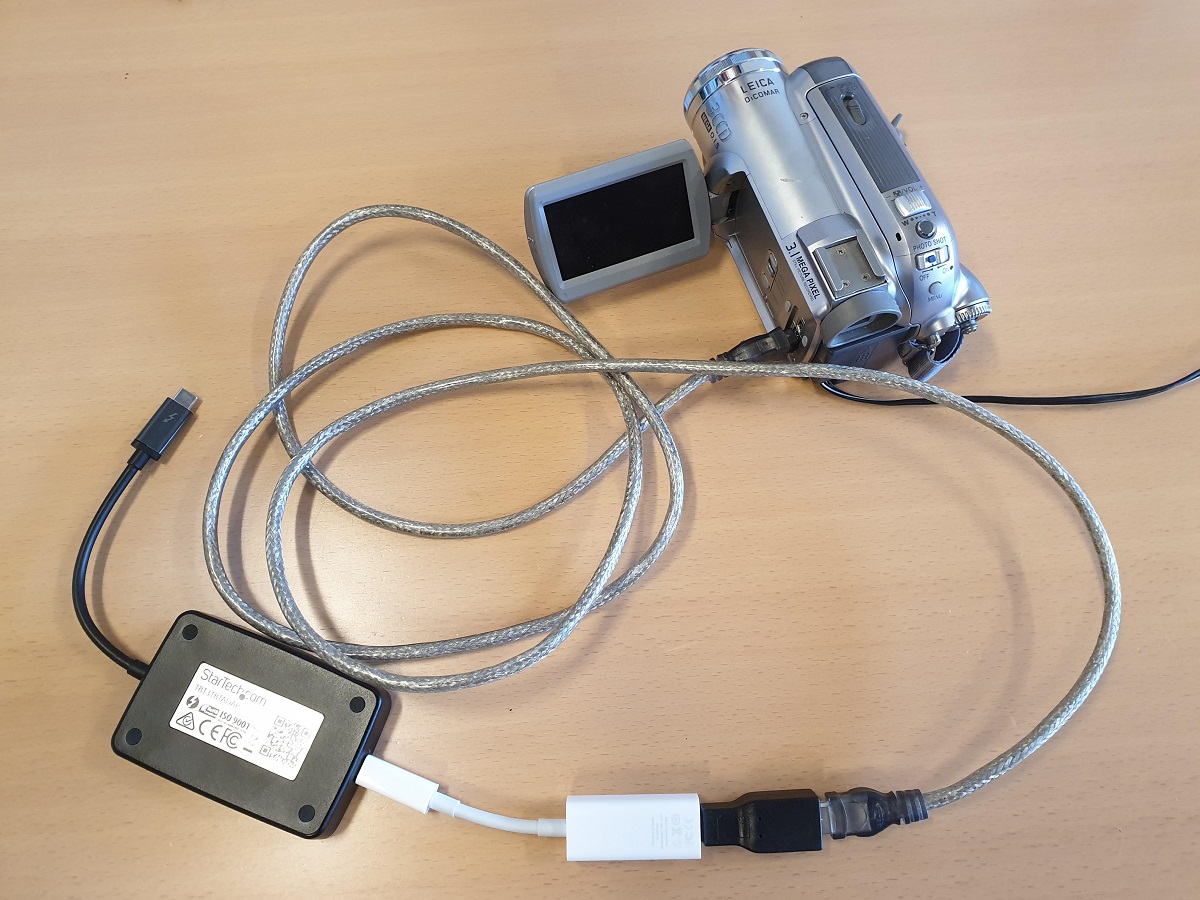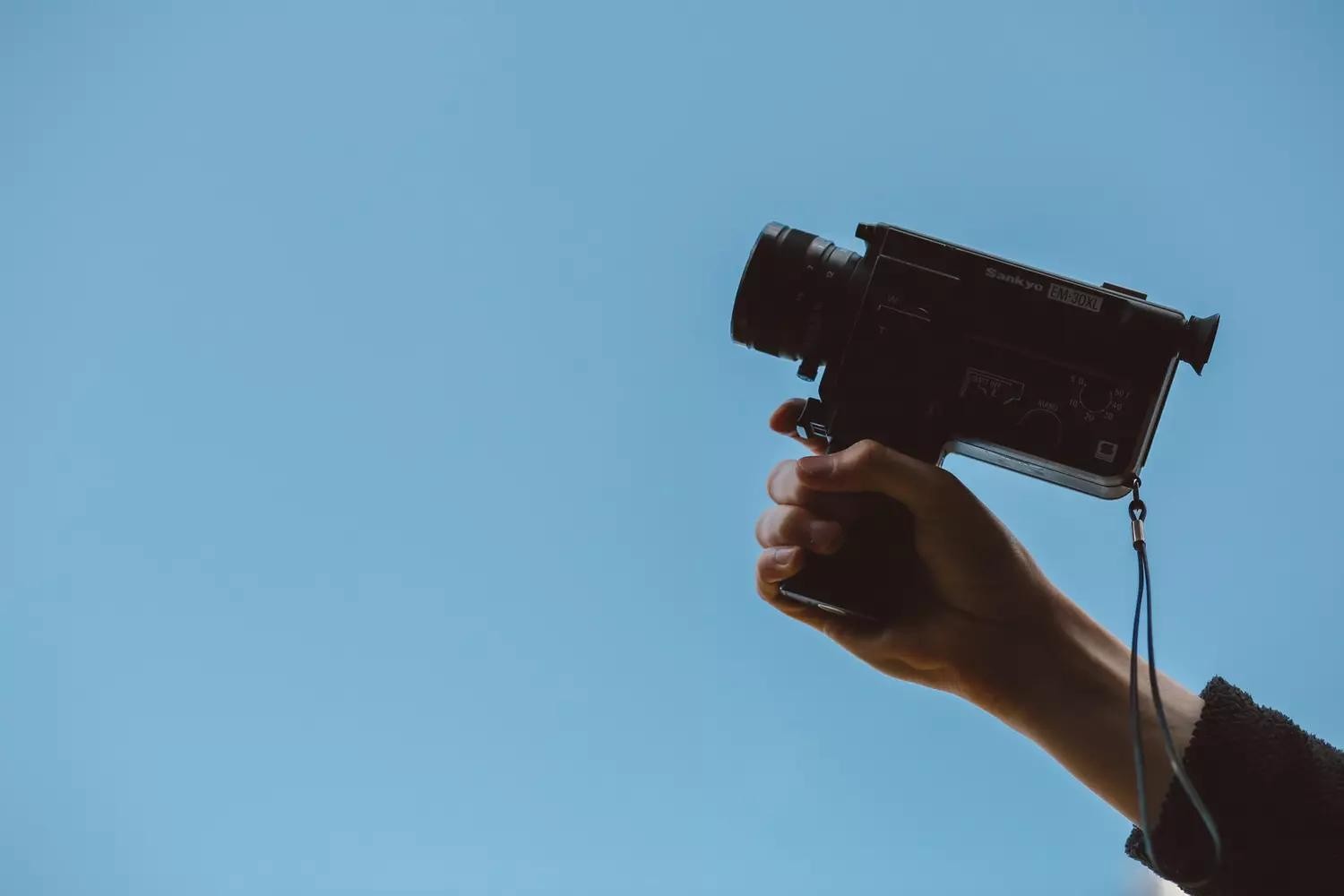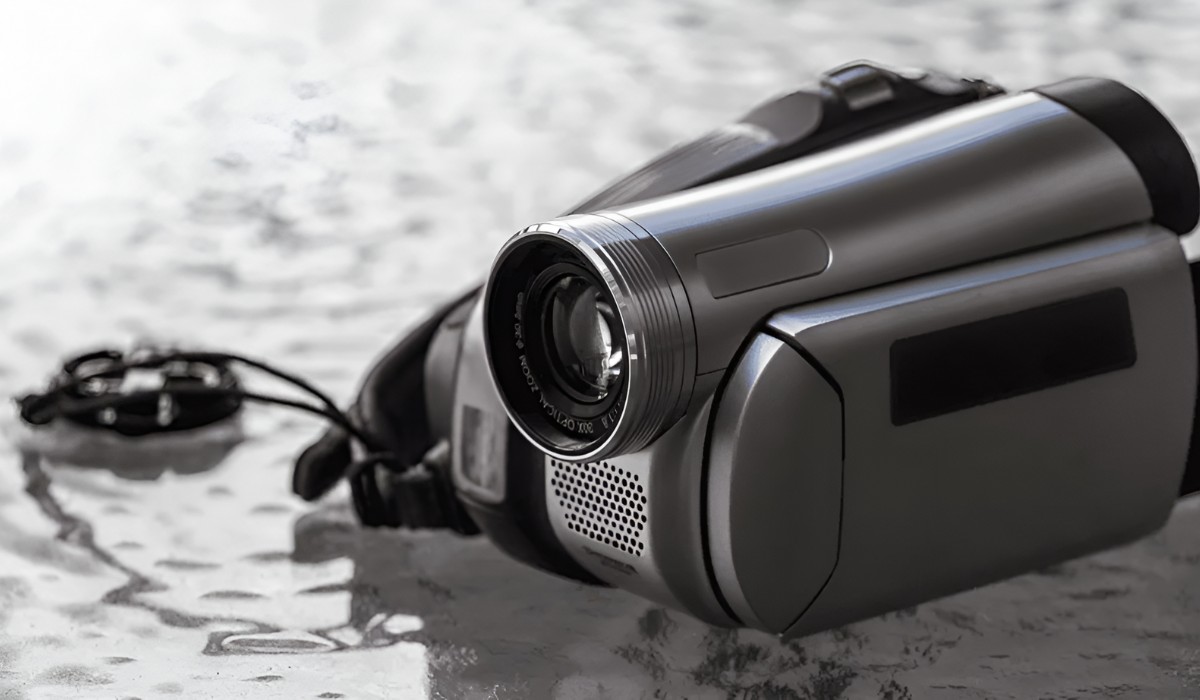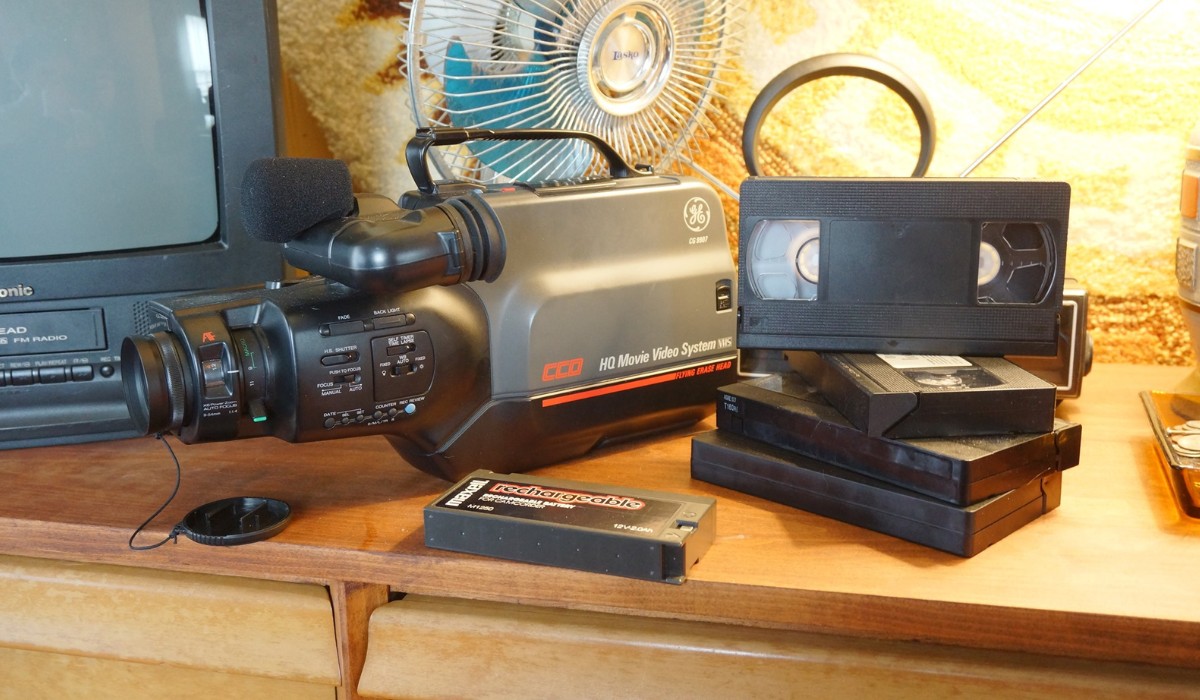Introduction
So, you've got a Sony camcorder and you're itching to transfer your videos to your computer. But before you can start, you need to ensure that the Firewire port on your Sony camcorder is in good working condition. This is crucial because the Firewire port is the gateway for transferring high-quality video footage from your camcorder to your computer.
In this guide, we'll walk you through the process of checking if the Firewire port on your Sony camcorder is functioning properly. We'll cover the basics of Firewire ports, explain how to connect your Sony camcorder to your computer, and provide step-by-step instructions for testing the Firewire port's functionality. Additionally, we'll explore common issues that may arise and offer troubleshooting tips to help you resolve any potential problems.
By the end of this guide, you'll have a clear understanding of how to determine if your Firewire port is working on your Sony camcorder, allowing you to seamlessly transfer your video recordings to your computer for editing, sharing, or safekeeping.
Let's dive into the world of Firewire ports and ensure that your Sony camcorder is ready to connect and transfer your cherished memories.
Understanding Firewire Ports
Before delving into the process of checking the functionality of the Firewire port on your Sony camcorder, it's essential to understand the role of Firewire ports in the realm of digital video transfer. Firewire, also known as IEEE 1394, is a high-speed interface commonly used for connecting digital devices, such as camcorders, to computers for data transfer.
Unlike USB ports, Firewire ports are specifically designed for high-bandwidth data transfer, making them ideal for handling large video files without sacrificing quality. This is particularly advantageous for video professionals and enthusiasts who require efficient and reliable data transfer for editing and archiving purposes.
Firewire ports come in different iterations, including Firewire 400 and Firewire 800, each offering varying data transfer speeds. The Firewire 400 port supports data transfer rates of up to 400 Mbps, while the Firewire 800 port boasts even faster speeds of up to 800 Mbps, providing superior performance for demanding video applications.
When it comes to Sony camcorders, Firewire ports play a pivotal role in facilitating the transfer of high-definition video footage from the camcorder to a computer. This direct digital connection ensures that the original quality of the video recordings is preserved during the transfer process, making Firewire an indispensable feature for video professionals and enthusiasts alike.
By understanding the capabilities and significance of Firewire ports, you can appreciate their crucial role in maintaining the integrity of your video content as it travels from your Sony camcorder to your computer. With this knowledge in mind, you'll be better equipped to assess and verify the functionality of the Firewire port on your Sony camcorder, ensuring seamless and high-quality video transfer.
Checking Firewire Port on Sony Camcorder
Before proceeding with the process of checking the Firewire port on your Sony camcorder, it’s important to locate the port itself. On most Sony camcorder models, the Firewire port is typically situated near the other connectivity ports, such as USB and HDMI. It is often labeled as “DV” or “IEEE 1394,” indicating its Firewire functionality.
Once you’ve identified the Firewire port on your Sony camcorder, visually inspect it for any physical damage or foreign objects that may obstruct the connection. Ensure that the port is clean and free from debris, as any impediments could affect the quality of the connection and data transfer.
Next, gently insert the Firewire cable into the port, ensuring that it is securely and snugly connected. Take care to align the connector correctly to avoid forcing it into the port, as this could potentially damage the port or the cable. A proper connection is essential for reliable data transfer and the accurate assessment of the port’s functionality.
It’s also advisable to check the cable itself for any signs of wear or damage. Inspect the cable’s connectors and insulation for any visible issues that may compromise the connection. If the cable appears damaged, it’s recommended to use a different Firewire cable to conduct the port check, as a faulty cable can yield inaccurate results.
With the Firewire cable securely connected to the port, you’re now ready to proceed to the next step, which involves connecting your Sony camcorder to your computer. This connection will enable you to test the functionality of the Firewire port and verify its ability to transfer video data effectively.
By carefully inspecting the Firewire port on your Sony camcorder and ensuring a proper connection with a functional Firewire cable, you set the stage for a reliable assessment of the port’s performance. With these preparations in place, you can confidently proceed to connect your Sony camcorder to your computer and initiate the port testing process.
Connecting Sony Camcorder to Computer
Once you’ve confirmed that the Firewire port on your Sony camcorder is in good condition and securely connected to a functional Firewire cable, the next step is to establish a direct connection between your camcorder and your computer. This connection will enable you to test the functionality of the Firewire port and initiate the data transfer process.
To begin, power on your Sony camcorder and set it to the appropriate mode for data transfer. Depending on the model of your camcorder, this mode may be labeled as “PC Connect,” “Computer,” or “DV In/Out.” Consult your camcorder’s user manual for specific instructions on selecting the correct mode for data transfer.
Once the camcorder is in the designated transfer mode, use a compatible Firewire cable to connect the Firewire port on your camcorder to the Firewire port on your computer. Most modern computers are equipped with Firewire ports, but if your computer does not have a built-in Firewire port, you can use a Firewire-to-USB adapter to establish the connection.
After connecting the camcorder to the computer via the Firewire cable, power on the computer and wait for it to recognize the connected camcorder. Depending on your operating system, you may receive a notification indicating that a new device has been detected and is being configured for use. Follow any on-screen prompts to ensure that the camcorder is recognized and ready for data transfer.
Once the camcorder is successfully recognized by the computer, you can proceed to access the video transfer software or video editing application of your choice. Many video editing programs, such as Adobe Premiere Pro, Final Cut Pro, or Windows Movie Maker, support Firewire connectivity and allow for seamless transfer of video footage from the camcorder to the computer.
With the camcorder connected and recognized, launch your preferred video editing software and navigate to the import or capture function. This will initiate the process of transferring video data from the camcorder to the computer, allowing you to test the functionality of the Firewire port and verify its ability to facilitate high-quality data transfer.
By establishing a direct connection between your Sony camcorder and your computer via the Firewire cable, you pave the way for testing the Firewire port’s functionality and initiating the video data transfer process. With the connection in place, you’re ready to proceed to the next step and verify the performance of the Firewire port on your Sony camcorder.
Testing Firewire Port Functionality
With your Sony camcorder connected to your computer via the Firewire cable, it’s time to put the Firewire port to the test and verify its functionality. The testing process involves initiating the transfer of video data from the camcorder to the computer, allowing you to assess the port’s performance and the quality of the data transfer.
Begin by launching your preferred video editing software or the designated video capture application on your computer. Navigate to the import or capture function within the software, and select the option to import video from a digital device or camcorder. This will prompt the software to establish a connection with the camcorder and initiate the data transfer process via the Firewire port.
Once the software detects the connected camcorder, you should see the video feed from the camcorder displayed on your computer screen. This live video preview confirms that the Firewire port is successfully transmitting the video data from the camcorder to the computer in real time, indicating that the port is functioning as intended.
At this stage, you have the opportunity to preview and select the specific video footage that you wish to transfer to your computer. Use the controls within the video editing software to cue the video playback on the camcorder and initiate the transfer of the desired footage to your computer’s storage. The software will capture and save the video data directly to your computer’s hard drive, leveraging the high-speed capabilities of the Firewire port for efficient data transfer.
As the video data is being transferred, monitor the process to ensure that the transfer is smooth and uninterrupted. Pay attention to the video preview on your computer screen and verify that the transferred footage maintains its original quality without any visual artifacts or distortions. This observation confirms that the Firewire port is effectively preserving the integrity of the video data during the transfer process.
Upon successful completion of the video transfer, review the imported footage within your video editing software to confirm that the transferred video files are of the expected quality and resolution. Playback the imported footage to ensure that it plays smoothly and accurately reflects the original content captured by your Sony camcorder.
By conducting a comprehensive test of the Firewire port’s functionality and verifying the successful transfer of video data from your Sony camcorder to your computer, you can confidently affirm that the Firewire port is in good working condition. This confirmation sets the stage for seamless and reliable video data transfer, allowing you to leverage the high-speed capabilities of the Firewire port for your video editing and archiving needs.
Troubleshooting Firewire Port Issues
While testing the Firewire port on your Sony camcorder, you may encounter issues that hinder the successful transfer of video data to your computer. In such instances, troubleshooting the Firewire port can help identify and resolve potential issues, ensuring that the port operates optimally for seamless data transfer.
If you experience difficulties with the Firewire port, begin by checking the physical connection between the camcorder and the computer. Ensure that the Firewire cable is securely plugged into both the camcorder and the computer’s Firewire port. Additionally, inspect the Firewire ports for any signs of damage or debris that may impede the connection. Cleaning the ports and reseating the cable can often resolve connectivity issues.
Next, verify that the Firewire port on your computer is functioning correctly. Test the port with a different Firewire device, such as an external hard drive or another camcorder, to determine if the issue lies with the port itself. If the port fails to recognize other Firewire devices, there may be an underlying hardware or driver-related problem that requires further investigation or professional assistance.
Another common issue with Firewire ports involves compatibility and driver conflicts. Ensure that your computer’s operating system and video editing software are fully compatible with the Firewire port and the connected camcorder. Check for any available updates or patches for your operating system and software to ensure that they are optimized for Firewire connectivity.
If troubleshooting the physical connection and compatibility does not resolve the Firewire port issues, consider updating the drivers for the Firewire port on your computer. Visit the manufacturer’s website or use the device manager in your operating system to check for and install the latest drivers for the Firewire port. Updated drivers can often address connectivity and performance issues related to the Firewire port.
In some cases, the Firewire port on the camcorder itself may require servicing or repair. If you suspect that the port is malfunctioning despite proper troubleshooting, contact Sony’s customer support or a certified technician to assess and address the issue. Professional assistance can help diagnose and resolve hardware-related problems with the Firewire port.
By systematically troubleshooting Firewire port issues, you can identify and address potential obstacles that hinder the seamless transfer of video data from your Sony camcorder to your computer. Through careful inspection, compatibility checks, driver updates, and, if necessary, professional assistance, you can ensure that the Firewire port operates reliably and efficiently, enabling you to harness its high-speed capabilities for video data transfer.
Conclusion
In this comprehensive guide, we’ve navigated the intricacies of checking the Firewire port on your Sony camcorder to ensure its optimal functionality for seamless video data transfer. Understanding the significance of Firewire ports and their high-speed data transfer capabilities has provided valuable insight into the pivotal role of these ports in maintaining the integrity of video content during transfer.
By carefully inspecting the Firewire port on your Sony camcorder and establishing a secure connection with a functional Firewire cable, you’ve laid the groundwork for testing the port’s performance. Connecting your camcorder to your computer and initiating the video data transfer process has allowed you to assess the Firewire port’s ability to facilitate high-quality data transfer, ensuring that your cherished video recordings are preserved with utmost fidelity.
Throughout the testing process, troubleshooting potential Firewire port issues has equipped you with the knowledge and strategies to address connectivity, compatibility, and driver-related obstacles that may arise. By systematically addressing these challenges, you’ve safeguarded the reliability and efficiency of the Firewire port, empowering you to leverage its high-speed capabilities for seamless video data transfer.
As you embark on your journey to transfer and edit your video recordings, the successful testing and verification of the Firewire port’s functionality on your Sony camcorder instill confidence in the reliability of the port for future data transfer endeavors. Whether you’re archiving precious memories, editing professional video projects, or sharing captivating content, the robust performance of the Firewire port ensures a smooth and efficient transfer process.
Armed with a deep understanding of Firewire port functionality and the troubleshooting acumen to overcome potential challenges, you’re well-prepared to harness the power of the Firewire port on your Sony camcorder for seamless and high-quality video data transfer. This newfound proficiency opens the door to a world of creative possibilities, empowering you to unleash the full potential of your video content with confidence and ease.
With the Firewire port on your Sony camcorder primed for reliable and efficient data transfer, you’re poised to embark on your video editing and content creation endeavors with unwavering assurance in the port’s steadfast performance. As you navigate the realm of digital video production, the robust functionality of the Firewire port stands as a testament to its indispensable role in preserving the authenticity and quality of your video recordings.







